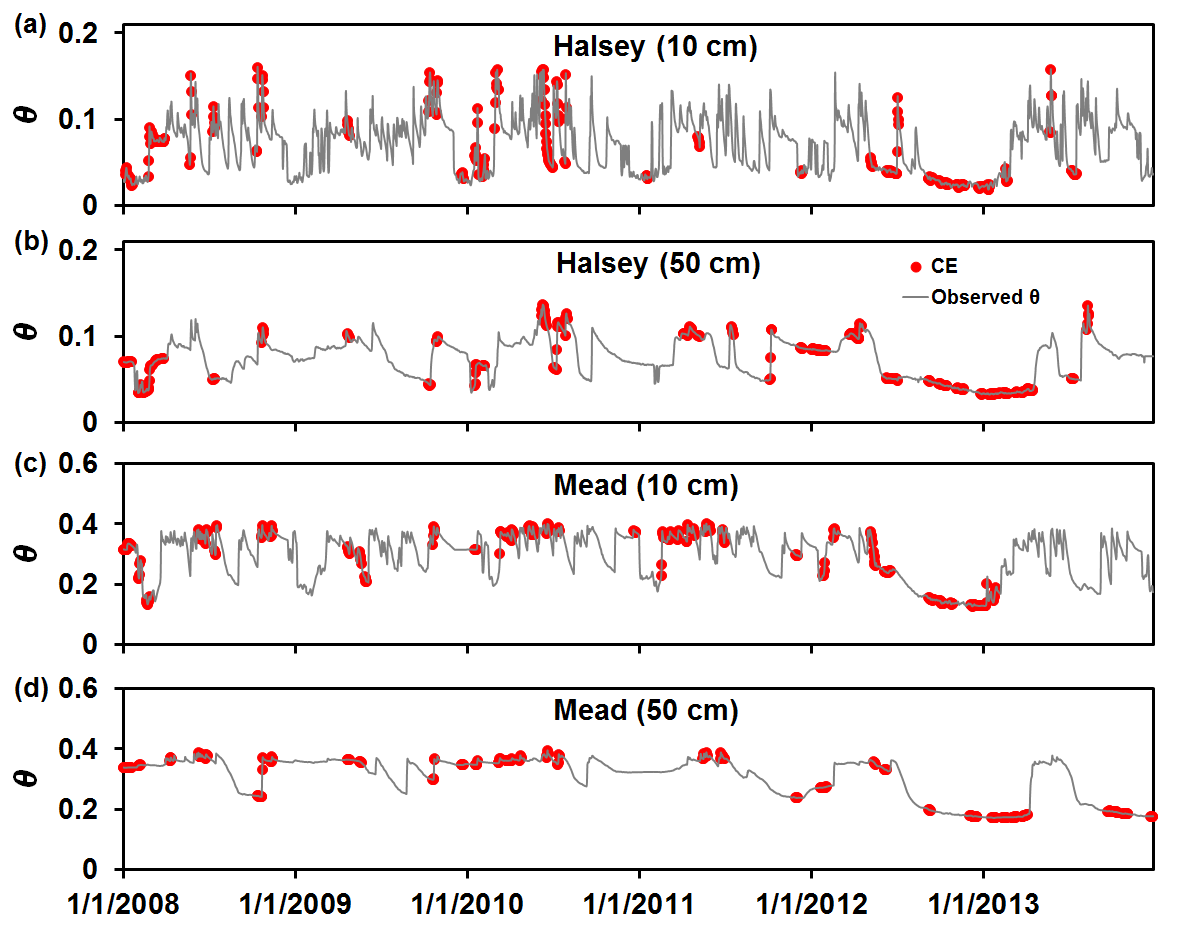Soil moisture is a key state variable in terrestrial water cycles, which links various land surface and hydrological processes. Owing to the significant spatiotemporal variability in soil moisture, collecting sufficient soil moisture data for relevant studies can be an astonishingly difficult task. Here, a statistical method based on the concept of depth functions was used to define Critical Events (CE) of soil moisture, which was hypothesized to contain disproportionally more system information on soil moisture dynamics. To test the feasibility of applying the CE concept for quantifying soil moisture dynamics, a long-term soil moisture dataset was retrieved from the Automated Weather Data Network (AWDN) located in the continental United States. The method of Temporal Stability Analysis (TSA) was adopted to examine the information embedded in soil moisture data that were collected under different conditions. The results showed that similar information on the relative as well as absolute wetness conditions at the AWDN sites was extracted from the entire time series and CEs of soil moisture, the latter of which contained much less soil moisture observations. Finally, the field data revealed that the occurrence of CEs of soil moisture in the study area was mainly affected by soil depth and interannual variability in precipitation. The number of CEs of soil moisture tended to be larger at deeper soil depths as well as in either dry or wet years than in normal years, suggesting that more soil moisture measurements under those conditions were needed to provide adequate information on soil moisture systems.

For more information : https://doi.org/10.1016/j.geoderma.2018.08.013
Wang T, Singh S K, Bárdossy A. On the use of the critical event concept for quantifying soil moisture dynamics[J]. Geoderma, 2019, 335: 27-34.